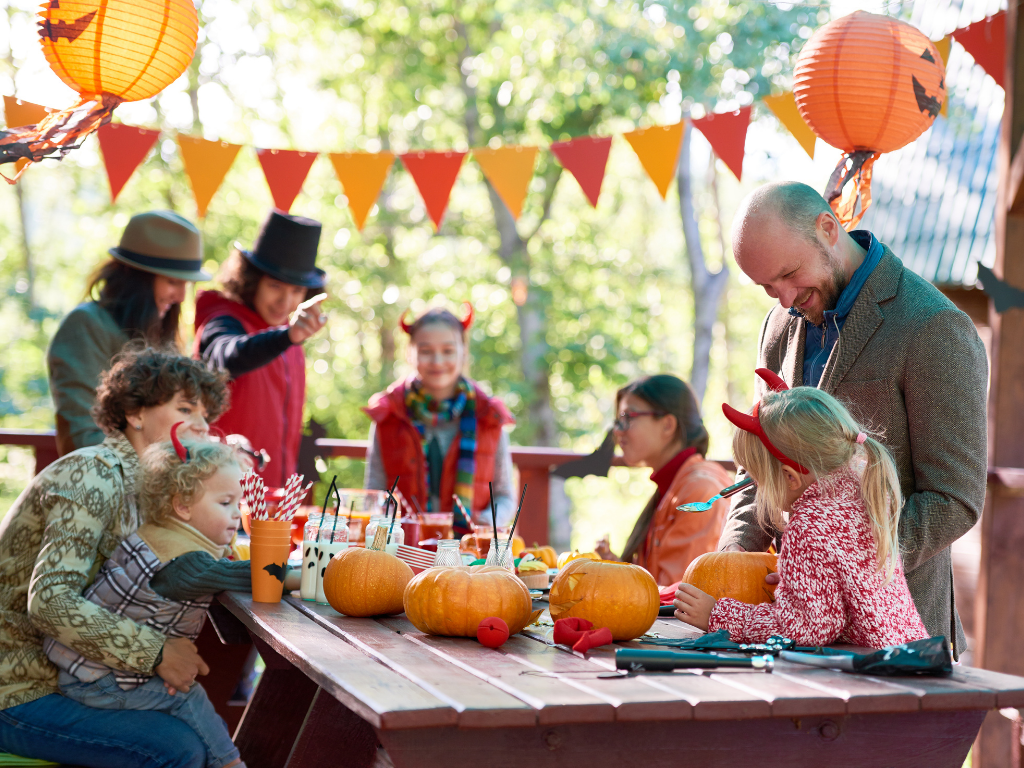Sustainable and Non-Toxic Cleaning Supplies for Your Home
Did you know many home cleaning supplies are toxic for humans and pets? Keep your family safe with these non-toxic, sustainable cleaning products!
.jpg)
INTERESTING ARCHITECTURE TRENDS
Lorem ipsum dolor sit amet consectetur adipiscing elit obortis arcu enim urna adipiscing praesent velit viverra. Sit semper lorem eu cursus vel hendrerit elementum orbi curabitur etiam nibh justo, lorem aliquet donec sed sit mi dignissim at ante massa mattis egestas.
- Neque sodales ut etiam sit amet nisl purus non tellus orci ac auctor.
- Adipiscing elit ut aliquam purus sit amet viverra suspendisse potenti.
- Mauris commodo quis imperdiet massa tincidunt nunc pulvinar.
- Adipiscing elit ut aliquam purus sit amet viverra suspendisse potenti.
WHY ARE THESE TRENDS COMING BACK AGAIN?
Vitae congue eu consequat ac felis lacerat vestibulum lectus mauris ultrices ursus sit amet dictum sit amet justo donec enim diam. Porttitor lacus luctus accumsan tortor posuere raesent tristique magna sit amet purus gravida quis blandit turpis.

WHAT TRENDS DO WE EXPECT TO START GROWING IN THE COMING FUTURE?
At risus viverra adipiscing at in tellus integer feugiat nisl pretium fusce id velit ut tortor sagittis orci a scelerisque purus semper eget at lectus urna duis convallis porta nibh venenatis cras sed felis eget. Neque laoreet suspendisse interdum consectetur libero id faucibus nisl donec pretium vulputate sapien nec sagittis aliquam nunc lobortis mattis aliquam faucibus purus in.
- Neque sodales ut etiam sit amet nisl purus non tellus orci ac auctor.
- Eleifend felis tristique luctus et quam massa posuere viverra elit facilisis condimentum.
- Magna nec augue velit leo curabitur sodales in feugiat pellentesque eget senectus.
- Adipiscing elit ut aliquam purus sit amet viverra suspendisse potenti .
WHY IS IMPORTANT TO STAY UP TO DATE WITH THE ARCHITECTURE TRENDS?
Dignissim adipiscing velit nam velit donec feugiat quis sociis. Fusce in vitae nibh lectus. Faucibus dictum ut in nec, convallis urna metus, gravida urna cum placerat non amet nam odio lacus mattis. Ultrices facilisis volutpat mi molestie at tempor etiam. Velit malesuada cursus a porttitor accumsan, sit scelerisque interdum tellus amet diam elementum, nunc consectetur diam aliquet ipsum ut lobortis cursus nisl lectus suspendisse ac facilisis feugiat leo pretium id rutrum urna auctor sit nunc turpis.
“Vestibulum pulvinar congue fermentum non purus morbi purus vel egestas vitae elementum viverra suspendisse placerat congue amet blandit ultrices dignissim nunc etiam proin nibh sed.”
WHAT IS YOUR NEW FAVORITE ARCHITECTURE TREND?
Eget lorem dolor sed viverra ipsum nunc aliquet bibendumelis donec et odio pellentesque diam volutpat commodo sed egestas liquam sem fringilla ut morbi tincidunt augue interdum velit euismod. Eu tincidunt tortor aliquam nulla facilisi enean sed adipiscing diam donec adipiscing ut lectus arcu bibendum at varius vel pharetra nibh venenatis cras sed felis eget.
We all want a clean home, but not at the cost of the safety of ourselves or our loved ones. Common home cleaning supplies such as bleach are toxic to inhale and can irritate your skin, not to mention the potential danger they pose to your pets and children. Luckily, many cleaning supply manufacturers have made strides toward formulating more eco-friendly products that don’t endanger your family’s health, meaning it’s easier than ever to buy or DIY natural home cleaning supplies.
If you struggle to find cleaning supplies that are both nontoxic and sustainable, worry not. We’ve got your home cleaning needs covered. Keep reading to learn about essential cleaning supplies you can feel good about using!
- Look for Eco-Friendly and Nontoxic Brands
It’s imperative to find home cleaning brands that align with your goals and individual needs to make your household safer and more eco-friendly. Several companies have implemented sustainability efforts, offering eco-friendly cleaning products with refillable and compostable packaging. With a little research, you can find products that are safe for your family and good for the environment!
- DIY Air Fresheners
Air quality is one of the most important factors for a healthy and safe home environment. Unfortunately, many store-bought air fresheners contain airborne toxins like formaldehyde, which can be harmful to you, your family members, and your pets. However, you can make a cost-effective, safe air freshener at home with only a few ingredients.
Combine half a cup of water and half a cup of baking soda in a mixing bowl and stir until you have a thick paste. Then, add about a dozen drops of an essential oil of your choice (citrus essential oils work well!) and stir to combine. Line a muffin pan with paper cupcake liners, and scoop a few spoonfuls of the mixture into each liner. Leave them to sit for 24 hours and then place them anywhere around the house where you want to eliminate odors (Englishman, 2018).
- Swap Out Single-Use Cleaning Supplies
One of the best ways to increase the sustainability of your cleaning practices is by eliminating single-use products like paper towels or dryer sheets. Fortunately, there are great alternatives to both of these items.
Cellulose sponge cloths, also known as Swedish dishcloths, are an eco-friendly substitute for paper towels. These cleaning cloths are reusable for as long as six months. Plus, they’re safe to use on a variety of surfaces and can be washed in your dishwasher or washing machine (Moroz Alpert & Sessums, 2023; Strampe, 2023).
For an alternative to single-use dryer sheets, swap them for dryer balls. They’re fantastic for reducing lint and static, and they will dry your clothes quickly (Moroz Alpert & Sessums, 2023).
- Use Hypoallergenic Hand Soap
If you have sensitive skin, cleaning products, and personal care items can cause irritation and redness. For some, even hand soap can cause a reaction. If you struggle to find products that are gentle on your skin but still effective, try a hypoallergenic soap.
Hypoallergenic products are free of skin irritants such as chlorine, ammonia, and formaldehyde, as well as unnecessary ingredients like dyes, parabens, and phosphates. Try hypoallergenic soaps and laundry detergents free of fragrance, phosphates, and dyes (Malin & Redman, 2021).
- Test Out Dishwasher Tablets
Dishwasher detergent pods often come packaged in plastic, which increases plastic waste and leaves a plastic film on your dishes when they dissolve. On the other hand, dishwasher tablets come in powder form, meaning there’s no plastic involved. The tablets are made with plant-based, environmentally friendly ingredients and are compact for easy storage. Additionally, dishwasher tablets usually come in a reusable tin, which can be repurposed when the tablets are gone (Malin & Redman, 2021; Strampe, 2023).
- Utilize a Convenient Cleaning Kit
If you’re feeling overwhelmed by the selection of eco-friendly cleaning products to choose from, cleaning kits are a great place to start. These kits include general cleaning products that can be used throughout the house, and they’re a cost-effective way to try out a variety of products so that you can discover what you like. These cleaning kits can come at various prices and products depending on your needs. Research different cleaning brands to find the best cleaning kit for your home (Strampe, 2023).
- DIY All-Purpose Cleaner
Instead of buying an eco-friendly all-purpose cleaner, you can also make one at home! With only a handful of ingredients and a reusable spray bottle, you can DIY an effective, safe all-purpose cleaner that works on all surfaces. Combine equal parts warm, filtered water and white distilled vinegar and shake well. You can also add a few drops of essential oil of your choice for a safe, fragranced cleaner (Englishman, 2018; Malin & Redman, 2021).
- Invest in a Nontoxic Laundry Detergent
If your commercial laundry detergent has ever made you break out in hives or a rash, you might be in the market for a nontoxic laundry detergent. Babies’ skin is especially sensitive to laundry detergent, so using a natural detergent is a great way to prevent irritation.
While commercial laundry detergents can contain chemicals like surfactants, phosphates, and even carcinogens, natural detergents are often plant-based, hypoallergenic, and free from harmful ingredients such as dyes, sulfates, phosphates, chlorine, and artificial fragrances. Many nontoxic brands also utilize eco-friendly packaging, making them both good for you and the planet (The Good Trade, 2018).
- DIY Dish Soap
Using quality dish soap is very important, as the residue it leaves behind on your utensils and dishes will eventually come into contact with your food and body. Many commonly used liquid dish soaps contain fragrances, formaldehyde, and other toxic chemicals.
Luckily, it’s easy to make your dish soap at home. Castile soap is an all-purpose cleaner used for cleaning everything from washing your hair and body, to cleaning makeup brushes and clothing. Castile soap can also be combined with water to make a simple dish soap.
Combine the castile soap and water in a ratio of 1:10, mix in a reusable bottle, and use the mixture as you would any other liquid dish soap. Castile soap is made with plant-derived fats such as olive or coconut oil instead of the animal-derived fats present in liquid dish soaps. Also, castile soap comes in many different scents, so you can choose one that suits your preferences (Englishman, 2018).
- Use Biodegradable Sponges and Dishcloths
Sponges are often made of unsustainable materials and need to be replaced frequently. However, some sponges are recyclable or biodegradable, making them a better option than regular sponges that are thrown away (Strampe, 2023).
To prolong the life of your sponges and prevent them from collecting and spreading bacteria, exchange them for biodegradable cellulose alternatives and sterilize them weekly. Sterilize by boiling a pot of water and dropping the sponge inside to help prevent fungus and bacteria buildup; then, add about eight drops of orange essential oil. Don’t forget to replace your sponge regularly! Once they reach the end of their use, biodegradable sponges can be disposed of in the compost (Englishman, 2018).
PRO TIP: Use dish brushes instead of sponges — they’re more resilient; plus, they’re great for removing stains from coffee mugs or getting stubborn food residue off of pots and pans for a next-level clean (Moroz Alpert & Sessums, 2023).
Our homes are our safe space, so the last thing we want is to worry about the home cleaning supplies we use compromising our family’s health. Maintaining a clean home is essential to our mental and physical well-being, which is why finding cleaning supplies that we feel safe using is of the utmost importance. Finding the right products can certainly be a hassle, but with a little research, you'll be equipped with the right products.
For more information on home maintenance, check out our blog!
Resources:
15 best eco-friendly cleaning products, according to experts
21 Eco-Friendly Cleaning Products You Should Use ASAP
Ditch These 5 Toxic Cleaning Products And Make These DIY Recipes Instead
The Best Eco-Friendly Cleaning Products for Your Home


